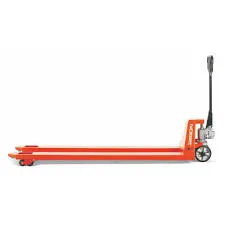


Understanding Fall Protection Tools A Comprehensive Overview
In various industries, particularly construction, roofing, and maintenance, ensuring the safety of workers is paramount. One of the leading causes of workplace injuries and fatalities is falls, making fall protection tools essential. This article delves into the various fall protection tools available and discusses their importance, types, and best practices for use.
The Importance of Fall Protection
Falls can result in severe injuries including fractures, concussions, and even fatalities. According to the Occupational Safety and Health Administration (OSHA), falls accounted for approximately 33% of all construction-related deaths in recent years. These statistics underscore the critical need for effective fall protection measures. Employers are mandated by law to provide a safe working environment, which includes adequate fall protection systems.
Types of Fall Protection Tools
Fall protection tools can be broadly classified into three categories personal fall arrest systems, guardrails, and safety nets. Each of these plays a crucial role in preventing falls and ensuring worker safety.
1. Personal Fall Arrest Systems (PFAS)
Personal fall arrest systems are designed to protect workers from falling by arresting their descent if a fall occurs. PFAS components typically include
- Full-Body Harness A full-body harness distributes the force of a fall across the body and is essential for protection. It must fit well and be adjusted properly to ensure maximum safety. - Lanyards and Lifelines These devices connect the harness to an anchorage point. Lanyards and lifelines come in various forms, including self-retracting lifelines that automatically retract to minimize fall distances.
- Anchor Points Secure anchor points are crucial, as they provide the connection point for PFAS. These points must be capable of supporting the intended load and be correctly positioned to prevent accidents.
2. Guardrails
Guardrails are passive fall protection systems that prevent workers from falling off elevated surfaces. They are used in various settings, including scaffolds, roofs, and open-sided floors. The key features of guardrails include
- Top Rails Typically installed at a height of 42 inches, top rails are the primary point of protection
.- Mid Rails Positioned halfway between the top rail and the walking surface, mid rails help prevent small individuals from slipping through the guardrail system.

- Toe Boards These boards are installed at the bottom to prevent tools, equipment, and debris from falling off the edge.
Guardrails are effective because they provide continuous protection without requiring workers to don any additional gear.
3. Safety Nets
Safety nets catch workers who fall and prevent them from hitting the ground or any lower levels. They are particularly useful in situations where other protection systems may be impractical or where a fall could occur from a significant height. Key considerations for safety nets include
- Installation and Positioning Safety nets must be installed below the walking or working surfaces and be secured to prevent movement during a fall.
- Net Quality The materials used in safety nets must be durable and capable of withstanding the forces of falls from heights.
Best Practices for Using Fall Protection Tools
To maximize safety, it is crucial that fall protection tools are used correctly. Here are some best practices
- Training Workers should receive comprehensive training on the proper use and limitations of fall protection tools. This includes how to inspect and maintain equipment.
- Regular Inspections All fall protection tools should undergo regular inspections to ensure they are in good working order. Any defective equipment should be immediately replaced.
- Correct Usage Workers must use the equipment according to the manufacturer’s instructions. Improper use can lead to fatal accidents.
- Developing a Fall Protection Plan Employers should create a detailed fall protection plan tailored to the specific needs and hazards of their job sites.
Conclusion
Fall protection tools are vital for safeguarding workers at heights. Understanding the types of tools available and best practices for their usage can significantly reduce the risks associated with falls. By prioritizing fall protection, employers can create a safer environment, reduce workplace injuries, and enhance overall productivity in their operations. Investing time and resources into fall safety is not just a regulatory obligation; it’s a commitment to the well-being of every worker.



